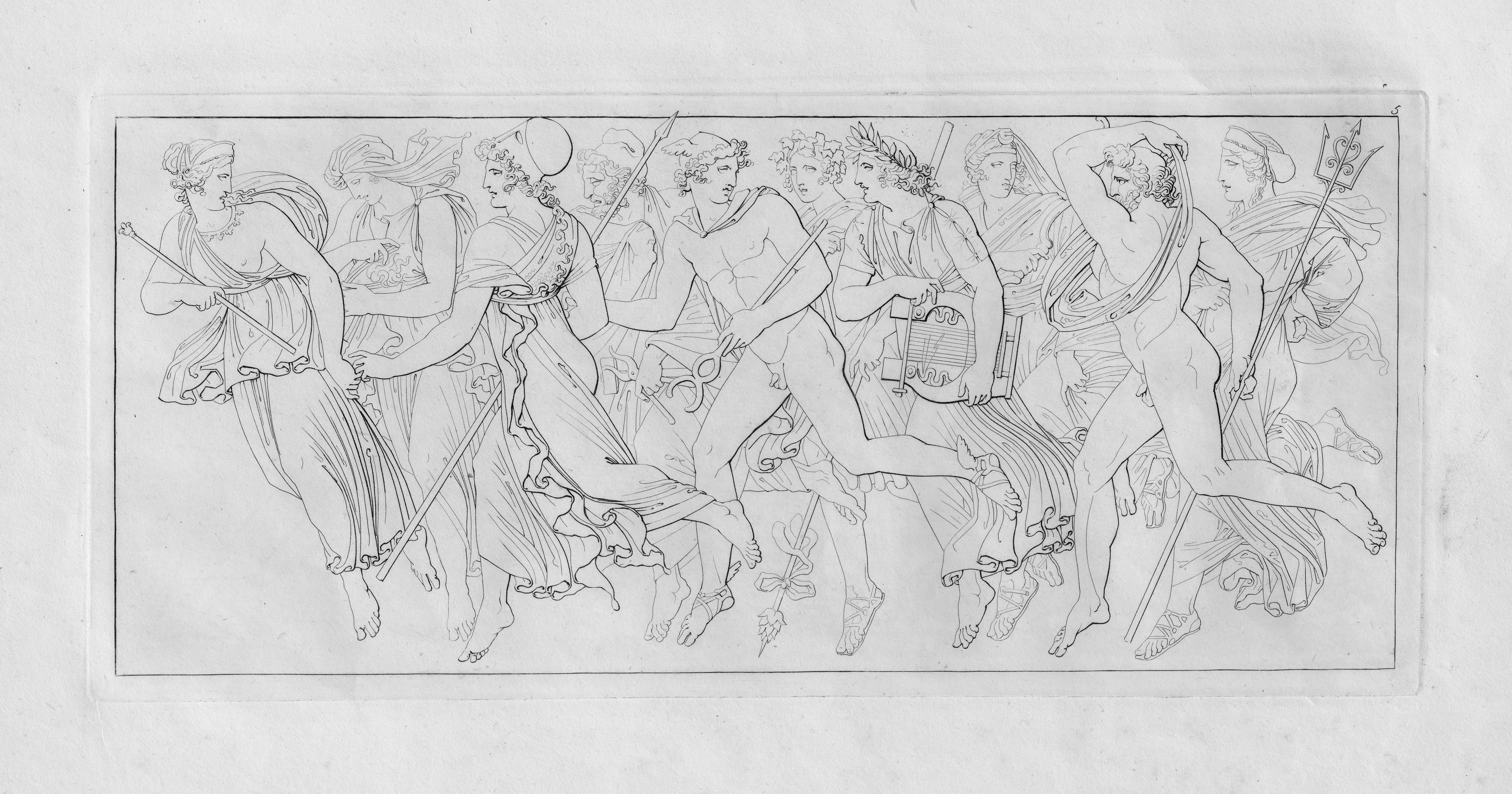Loading the page ...
Ferdinand Ruscheweyh
(1785–1846, Neustrelitz)
Le feste di Eleusi Poema di Federico Schiller da Gio. Martin Wagner (The Eleusian Feast). Twenty outline etchings with title and text, bound in the original cover. Transverse quarto. “Roma 1817, presso Francesco Bourlie”. Nagler 84–104.
This rare and beautiful series contains illustrations of Friedrich Schiller’s poem Das Eleusische Fest that was published in the Musenalmanach in 1799. The literary form of the poem is that of a festive hymn to the Eleusian Feasts, with which Ceres was celebrated in antiquity as the goddess of agriculture. The deeper meaning of the poem is the introduction of agriculture as an important civilising moment in human history and as a significant stage on the road to social and cultural emancipation.
The artist used pen and ink drawings by the painter, sculptor and printmaker, Johann Martin von Wagner, who had settled permanently in Rome in 1809, as designs for this series of etchings. Wagner, who also distinguished himself as an art collector and archaeologist, was a central figure in the artistic life of Rome at the time. In 1812, for example, he travelled to Greece on behalf of the Bavarian King Ludwig I to acquire the pediment figures of the Temple of Aphaia at Aegina, which are among the most significant and finest marble sculptures of the so-called “severe style” (circa 500-480 BC). After their arrival in Rome in 1813, Wagner restored and completed the sculptures together with Bertel Thorvaldsen; today the ensemble is one of the most precious possessions of the Munich Glyptothek. The series of etchings is remarkable for its consistent focus on neo-classical forms and designs. The individual scenes in frieze form are distinguished by their originality and inventiveness. The power of the pure line and the firm outlining of the individual form, which is reminiscent of Wagner’s fellow artist John Flaxman, who was a generation older, conjure up a memor¬able, stoic mood that never seems monotonous. Joseph Anton Koch’s Argonauts (1799), a series of prints based on inventions by Asmus Jakob Carstens, may well also have had a formative effect on Ruscheweyh’s style. The rigorous purism arising from his concentrated, disciplined etching technique contributes significantly to the fascination and visual conciseness encountered in the series of prints. Fine impressions with wide margins. Slightly foxed, the margins and corners partly scuffed or with minor traces of creasing, the outer margins occasionally somewhat discoloured, the penultimate sheet with a vertical crease, other minor handling marks, otherwise in fine, untreated condition.
